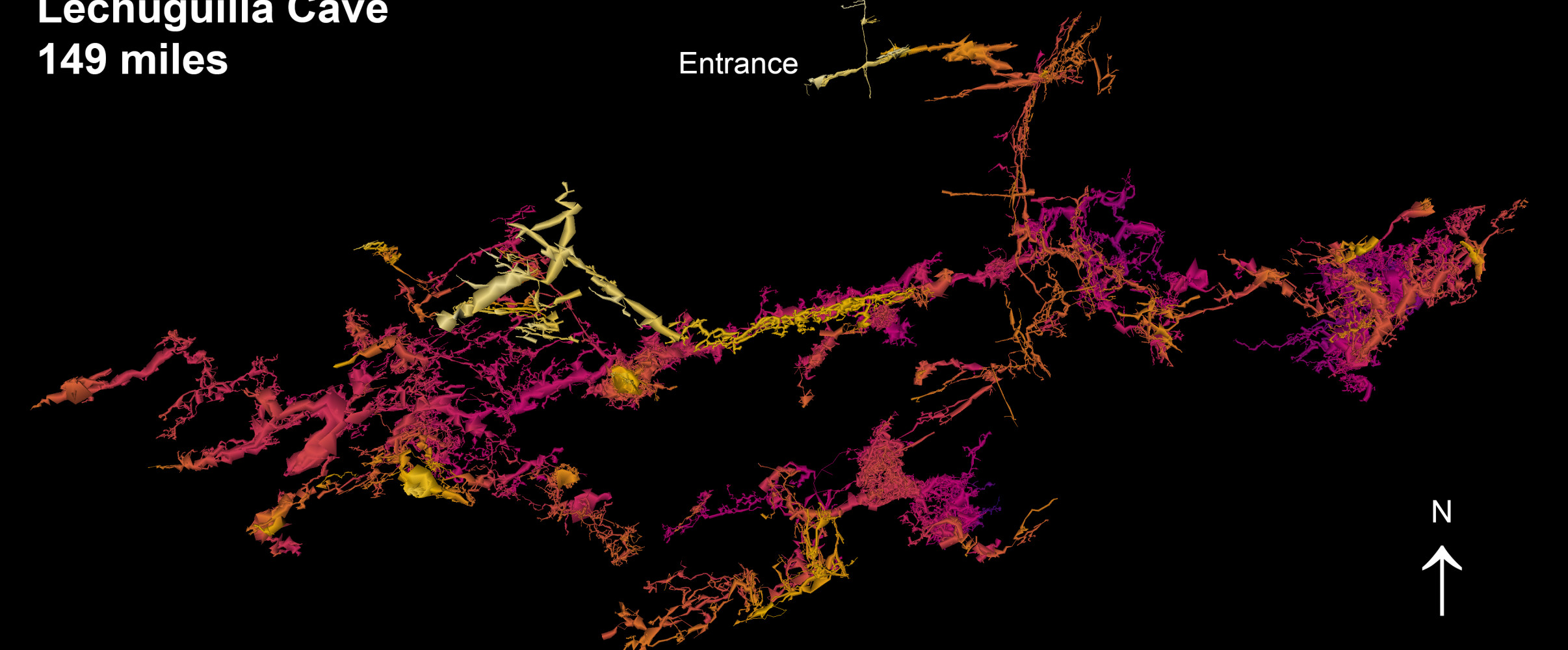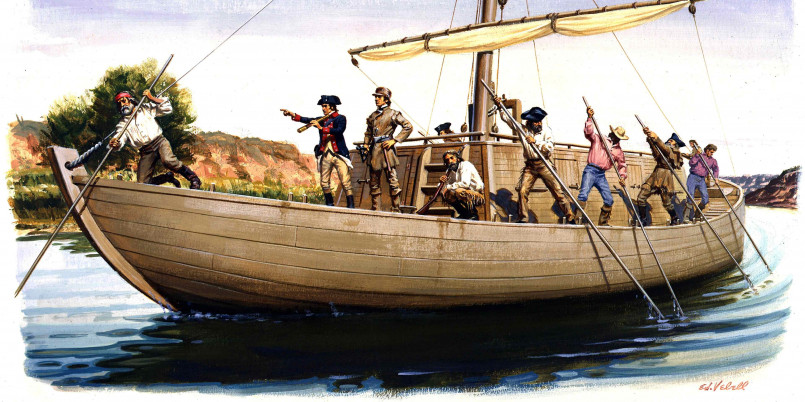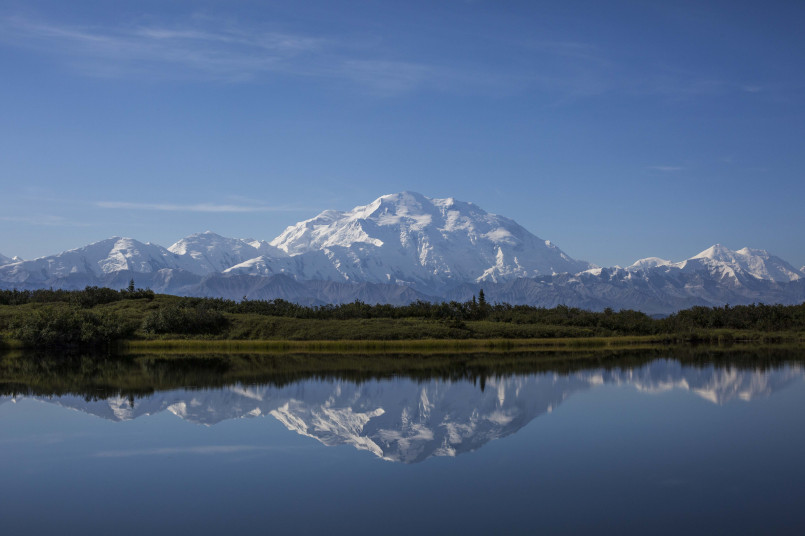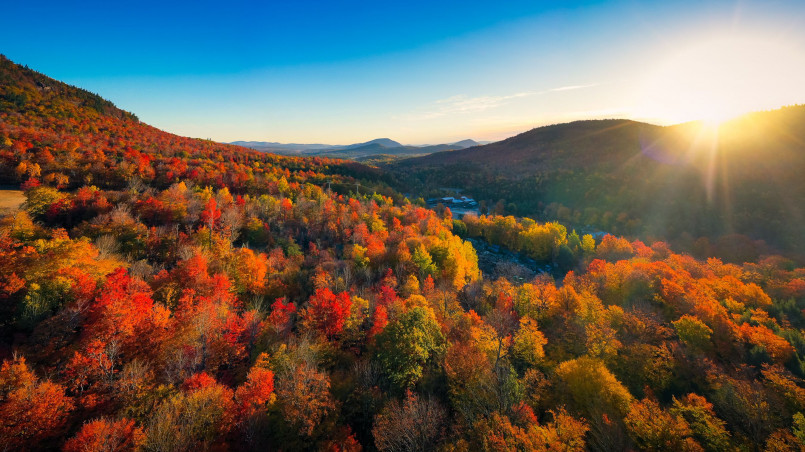Beneath America's surface lies a hidden world of massive cave systems, some extending thousands of feet into the earth. These natural wonders feature unique ecosystems, breathtaking formations, and continue to reveal new discoveries as explorers push deeper into their passages.
Beneath America's familiar landscapes lies a hidden world that few get to experience: vast underground cave systems that reach deep into the earth's crust. These natural wonders represent some of the most pristine and undisturbed environments on the planet, with passages that have remained unchanged for millions of years.
The United States is home to some of the world's most impressive caves, featuring unique mineral formations, underground rivers, and specialized ecosystems found nowhere else. From the crystal-filled chambers of New Mexico to the winding passages of Kentucky, these subterranean treasures continue to astound both casual visitors and dedicated speleologists who push the boundaries of exploration.
Lechuguilla Cave: America's Deepest Cave
Located in Carlsbad Caverns National Park, New Mexico, Lechuguilla Cave stands as the deepest cave in the continental United States with a depth of 1,604 feet (489 meters). What makes this cave particularly remarkable is that it remained virtually unknown until 1986, when explorers broke through a previously blocked passage.
Lechuguilla is famous for its extraordinary gypsum and sulfur deposits, creating formations rarely seen elsewhere in the world. The cave features massive chandelier-like structures, delicate crystalline flowers, and pools of pristine water that have remained untouched for millennia.
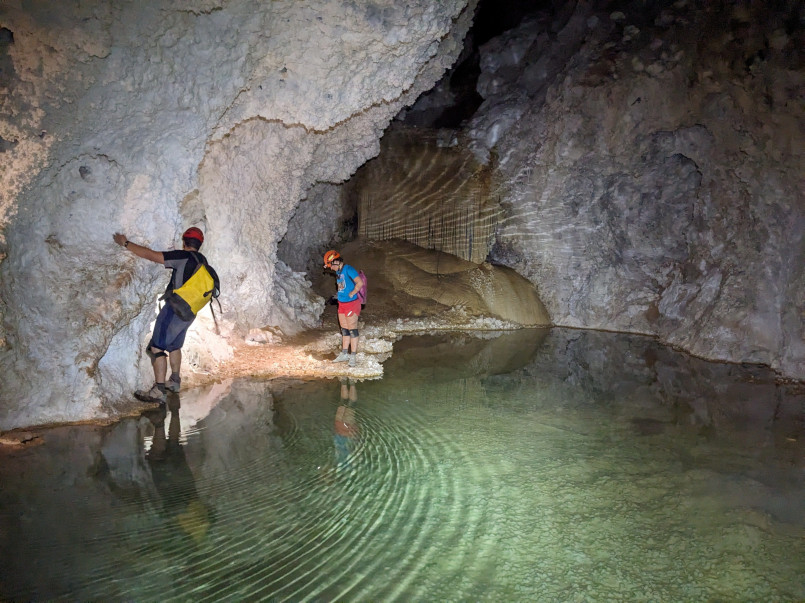
Unlike many popular caves, Lechuguilla is closed to the general public to preserve its pristine condition. Only scientific researchers and experienced cavers with special permits can enter, making it one of America's most protected natural treasures.
Jewel Cave National Monument
Located in the Black Hills of South Dakota, Jewel Cave is the third-longest cave system in the world, with more than 208 miles (335 km) of mapped passages. While not as deep as Lechuguilla, Jewel Cave's complex network of chambers and tunnels makes it a world-class underground wonder.
The cave earned its name from the calcite crystals that line its walls, sparkling like jewels when illuminated. These formations, known as "cave bacon" and "draperies," create an otherworldly landscape underground.
What's particularly exciting about Jewel Cave is that explorers estimate only about 3-5% of the cave has been discovered. The complex continues to yield new passages with each expedition, with airflow studies suggesting the system may be vastly larger than currently mapped.
Wind Cave National Park
Also located in South Dakota, Wind Cave is renowned for containing the world's largest concentration of a rare formation called boxwork - a honeycomb-like mineral structure protruding from cave walls and ceilings. The cave gets its name from the barometric winds at its entrance, created by air pressure differences between the cave and the surface.
Wind Cave features over 149 miles (240 km) of explored passages, making it one of the longest cave systems in the world. Its complex three-dimensional maze of passages makes it particularly difficult to map and navigate.
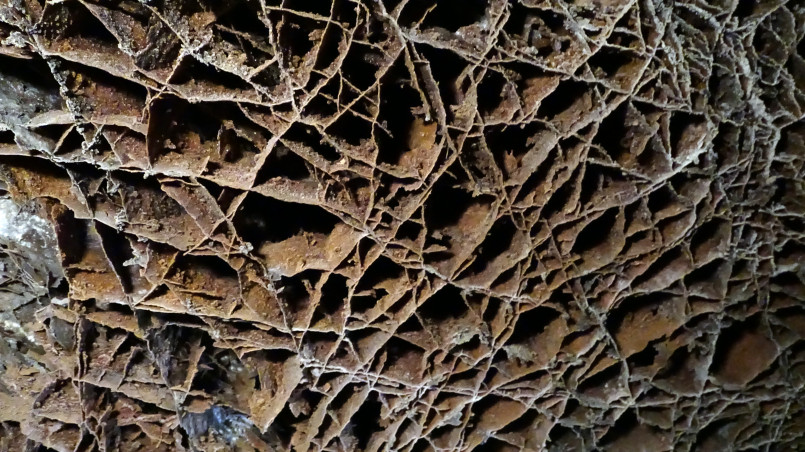
The cave also presents a unique ecosystem transition at its entrance, where the underground environment meets the mixed-grass prairie ecosystem above. This transition zone supports unique biological communities adapted to this specialized environment.
Carlsbad Caverns: Underground Kingdom
While not the deepest cave in America, Carlsbad Caverns National Park in New Mexico deserves special mention for its enormous chambers and spectacular formations. The cave's main chamber, the Big Room, is one of the largest natural underground chambers in North America at 4,000 feet (1,220 m) long, 625 feet (190 m) wide, and 255 feet (78 m) high.
Carlsbad was formed by sulfuric acid dissolution, a relatively uncommon process in cave formation that created its massive chambers. The cave is famous for its dramatic stalactites, stalagmites, and columns, some reaching dimensions rarely seen elsewhere.
Unlike many deep caves, Carlsbad Caverns is fully accessible to the public, with developed trails, lighting, and even an elevator system allowing visitors to experience this underground wonder. The evening bat flights from the natural entrance during summer months provide an additional spectacular natural display.
Fisher Ridge Cave System
Located in Hart County, Kentucky, the Fisher Ridge Cave System is among America's most significant caves, with over 125 miles of surveyed passages. This extensive cave network was discovered in 1981 and continues to be explored and mapped by dedicated cavers.
What makes Fisher Ridge particularly notable is its proximity to Mammoth Cave-the world's longest known cave system. Many researchers believe there may be undiscovered connections between these two massive systems, which would create an even more enormous underground network.
The cave features a variety of formations, including gypsum flowers, needles, and delicate helictites that form in defiance of gravity. Access is highly restricted to protect the cave's sensitive environment.
Ellisons Cave: Home to Fantastic Pit
Located in Walker County, Georgia, Ellisons Cave contains Fantastic Pit, the deepest known cave pit in the continental United States. This single vertical shaft drops a breathtaking 586 feet (179 meters) in one uninterrupted fall-deep enough that someone standing at the bottom cannot see the top when looking up.
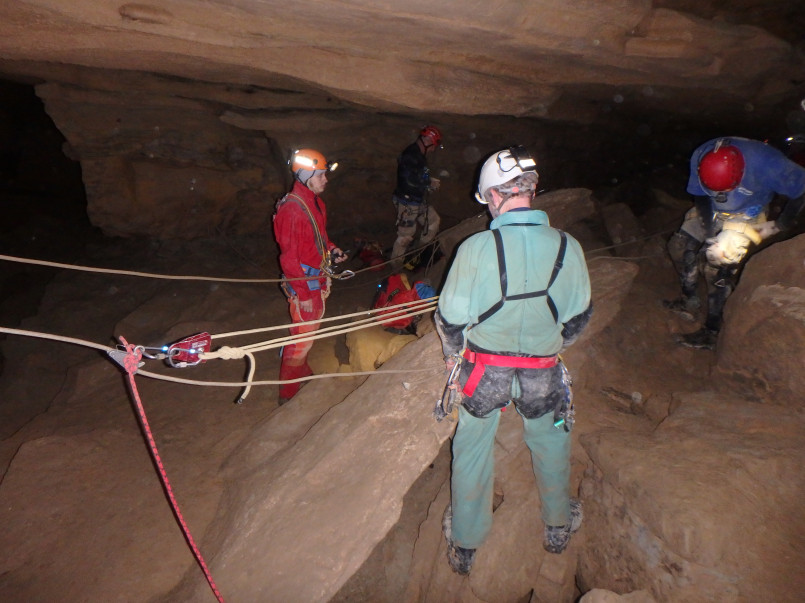
Ellisons Cave has a total depth of 1,063 feet (324 meters), making it one of America's deepest cave systems. Unlike the more famous limestone caves, Ellisons formed in dolomite rock, creating a somewhat different set of formations and characteristics.
This cave is a popular destination for experienced cavers but requires technical vertical caving skills and specialized equipment. The combination of tight passages and enormous vertical drops makes it particularly challenging to explore safely.
Sistema Huautla
While technically outside the United States' borders, Sistema Huautla in Oaxaca, Mexico, deserves mention as North America's deepest cave system at an astounding 5,118 feet (1,560 meters) deep. This massive system has been explored by numerous American-led expeditions and represents the pinnacle of deep cave exploration in the region.
The cave system features multiple entrances, enormous chambers, underground rivers, and waterfalls. Expeditions to Sistema Huautla often last weeks, with explorers camping underground as they push deeper into unexplored passages.
The challenging conditions, including flooding risks during rainy seasons, make this one of the most dangerous and technically demanding caves to explore in North America.
Mammoth Cave: World's Longest Cave System
Located in Kentucky, Mammoth Cave earns its place on this list not for its depth but for its sheer enormity-it's the longest known cave system in the world, with more than 420 miles (675 km) of surveyed passages. Explorers continue to discover new passages annually, extending this underground labyrinth.
Mammoth Cave features a remarkable variety of formations and cave types within its system, from massive open chambers to tight crawlways. The diverse geology has created an underground landscape unlike any other on Earth.
The cave has been known to humans for at least 4,000 years, with evidence of prehistoric exploration. Its more recent history includes use as a mining operation for saltpeter during the War of 1812, as well as controversial experiments as a tuberculosis hospital in the 19th century.
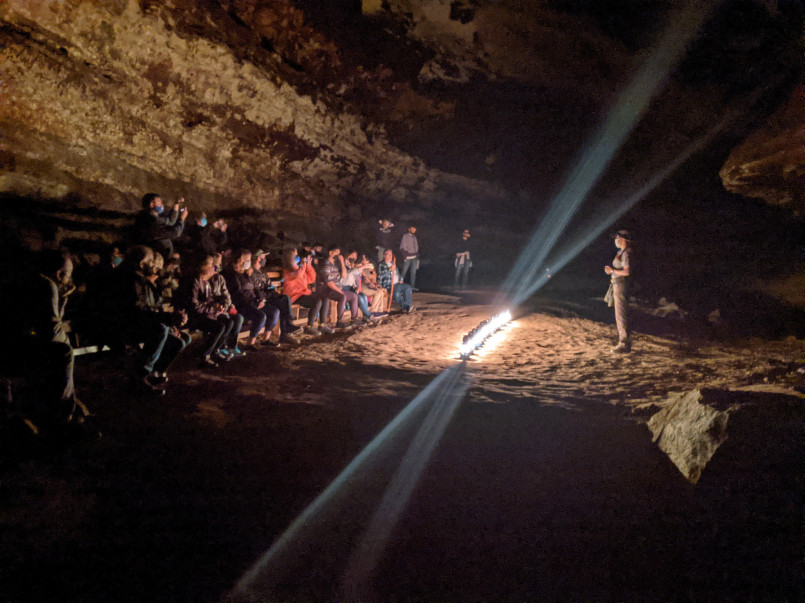
Blue Spring Cave
Located in White County, Tennessee, Blue Spring Cave is one of the most significant caves in the eastern United States, with over 40 miles (64 km) of mapped passages. The cave contains evidence of prehistoric human exploration and remains of extinct Pleistocene-era animals.
What makes Blue Spring Cave particularly notable are the jaguar tracks discovered in 1990 that have been dated to approximately 10,000 years ago-some of the best-preserved prehistoric cat tracks ever found. These and other paleontological discoveries have made the cave extremely valuable to scientists.
The cave's varied geology has created a wide range of formations, from massive flowstones to delicate soda straws. Access is restricted to protect both the fragile environment and the irreplaceable archaeological resources.
Cave Exploration Safety
Exploring America's deep caves is not without significant risks. Unlike developed tourist caves, wild caves present numerous hazards including hypothermia, falling rocks, flooding, and becoming lost or trapped. Even experienced cavers must take extensive safety precautions.
Professional cave explorers follow strict protocols:
- Always cave with a minimum of four people
- Carry multiple light sources and extra batteries
- Inform someone above ground of your exact plans and expected return time
- Wear appropriate gear including helmets with mounted lights
- Carry emergency supplies including first aid kits and extra food
- Receive proper training in vertical caving techniques before attempting deep caves
Many deep cave rescues have taken days or even weeks to complete due to the complex terrain and remote locations. The National Cave Rescue Commission trains specialized teams for these challenging scenarios, but prevention remains the best strategy.
Conservation Efforts and Cave Protection
America's deepest caves face numerous threats, from vandalism to the introduction of White-Nose Syndrome-a fungal disease that has killed millions of bats nationwide. As a result, conservation efforts have become increasingly important.
Many significant caves are now protected under various designations:
- National Park Service management
- Federal Cave Resources Protection Act of 1988
- State-level cave protection laws
- Partnerships with organizations like the National Speleological Society
Some caves, like Lechuguilla, implement strict protocols for visitors, including decontamination procedures for equipment and clothing to prevent the introduction of microbes that could disrupt delicate cave ecosystems that have evolved in isolation for millennia.
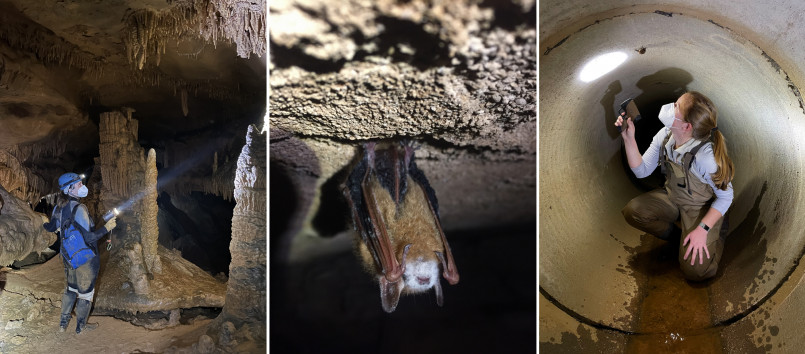
The Future of Cave Exploration in America
Despite centuries of exploration, America's caves continue to yield new discoveries. Modern techniques including 3D mapping, drone technology, and advanced climbing equipment are allowing explorers to reach previously inaccessible areas.
Scientists believe that significant portions of major cave systems remain undiscovered. Geological studies suggest the potential for even deeper systems, particularly in the limestone regions of the Appalachians, the Rockies, and Alaska's remote karst landscapes.
Beyond pure exploration, caves are increasingly valued for scientific research. These isolated environments provide opportunities to study extremophile organisms with potential applications in medicine and biotechnology. Some cave-dwelling microbes have already yielded compounds with antibiotic properties.
As climate change affects surface environments, caves may also serve as important refuges for certain species and provide valuable records of past climate conditions through their formations. This makes their protection and careful study more important than ever.
Frequently Asked Questions About 12 Jaw-Dropping Deepest Caves in USA: Underground Wonders Revealed
What is the deepest cave in the United States?
Lechuguilla Cave in New Mexico is the deepest known cave in the continental United States, with a depth of 1,604 feet (489 meters). It's located within Carlsbad Caverns National Park but is not open to the general public due to its pristine condition and ongoing scientific research.
Can tourists visit America's deepest caves?
While some deep cave systems like Carlsbad Caverns and Mammoth Cave have developed sections open to tourists, many of America's deepest caves are only accessible to scientific researchers and experienced cavers with special permits. Caves like Lechuguilla are completely closed to the general public to preserve their pristine environments.
What causes caves to form?
Most caves in the United States form through a process called dissolution, where slightly acidic water (usually rainwater mixed with carbon dioxide) slowly dissolves limestone or dolomite rock over millions of years. Some caves, like Carlsbad Caverns, formed through the more unusual process of sulfuric acid dissolution, which created its massive chambers.
How are caves mapped and measured?
Modern cave mapping uses a combination of traditional survey techniques with tape measures and compasses, along with advanced technology like 3D laser scanning. Cave depth is typically measured from the highest entrance to the lowest point reached, while length is calculated by measuring all accessible passages throughout the system.
Are new caves still being discovered in the USA?
Yes! New caves and passages within existing systems are discovered regularly. For example, Lechuguilla Cave was known only as a small, unremarkable cave until 1986 when explorers broke through a previously blocked passage. Since then, over 138 miles of passages have been mapped, and exploration continues to reveal new sections.
What wildlife lives in deep caves?
Deep caves host specialized ecosystems with animals adapted to permanent darkness. These include various species of blind fish, albino crayfish, cave crickets, and numerous bat species. Many caves also contain extremophile microorganisms that have evolved to survive in these nutrient-poor environments and are of great interest to scientists.
What is the best time of year to visit cave systems?
Most commercial cave systems can be visited year-round since they maintain relatively constant temperatures (usually 50-60°F) regardless of outside conditions. Summer is the most popular season for tourists, but visiting during off-seasons can provide a less crowded experience. Some caves with significant bat populations may have seasonal closures during hibernation or maternity seasons.
How dangerous is cave exploration?
Wild caving (exploring undeveloped caves) can be extremely dangerous without proper training and equipment. Risks include getting lost, hypothermia from cold temperatures and wet conditions, falling, flooding during rain events, and equipment failures. This is why proper training, experience, and never caving alone are essential safety practices.
